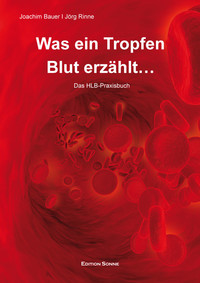HLB-Gerinnungstest
Was ein Tropfen Blut erzählt… der HLB-Gerinnungstest
Der HLB-Gerinnungstest ist eine qualitative Beurteilung des Blutes mit dem Mikroskop. Er ergänzt das quantitative schulmedizinische Blutbild, das in Wirklichkeit eine tabellarische Aufstellung der Blutbestandteile ist. Die so gewonnenen Blutdaten müssen mit Parametern aus dem Bevölkerungsdurchschnitt und dessen enormen Spannweiten verglichen werden, da ein Vergleich mit dem individuellen Idealzustand nur optisch, jedoch nicht statistisch möglich ist. Bis man sich von diesem Bevölkerungsdurchschnitt abhebt, kann ein krankhafter Zustand schon weit fortgeschritten sein.
Der HLB-Gerinnungstest ist denkbar einfach durchzuführen und hat zudem einige Vorteile gegenüber anderen Diagnosearten aufzuweisen. Beurteilt wird ein Blutstropfen, der aus der Fingerbeere entnommen wird und eingetrocknet ist. Der Test ist praxisgerecht, schnell durchführbar und leicht zu erlernen. Benötigt wird lediglich ein Hellfeldmikroskop mit niedriger Auflösung, das preiswert zu bekommen ist (ca. 180€ bis 600€).



Ein wesentlicher Vorteil des HLB-Gerinnungstest liegt darin, Stoffwechselstörungen z.B. der Leber an der Qualität der Gerinnung des Blutes sehr frühzeitig zu erkennen, lange bevor übliche Laborparameter im Blutbild auffällig werden. Im Unterschied zu einer schulmedizinischen Labordiagnostik eröffnet also der HLB-Gerinnungstest einen ganz anderen Einblick in das Blutgeschehen. Denn das, was der Therapeut im Mikroskop erkennen kann, ist vor allem die Qualität des Blutes und dessen Grad der Verschlechterung.

Bild 1 zeigt einen Tropfen geronnen Blutes bei 10facher Vergrößerung. Zu sehen ist ein einheitliches Bild von Erythrozytenclustern, die durch dunkle Fibrinstränge verbunden sind. Von diesem Normalbild ausgehend können nun die unterschiedlichsten Blutbilder beobachtet werden.
Bei einem hohen oxidativen Stress zerreißt der Fibrinmörtel und dadurch entstehen hell erscheinende Löcher. Diese Löcher können in ihrer Größe, Farbe und Form sehr variieren und beinhalten eine Reihe denaturierter Erythrozyten, Sialinsäurefäden, Gerinnungsproteine, Kristalle und andere Substanzen, die Stoffwechselstörungen des Organismus offenbaren.

Bild 2 zeigt einen getrockneten Tropfen Blut bei 10facher Vergrößerung mit hoher oxidativer Belastung. Wenn ein solcher Zustand lange anhält, sind chronische Krankheiten die Folge.
Namensherkunft des HLB-Gerinnungstests
Der Test wurde 1939 von Dr. med. Emanuel Goldberger, MD, Kings County Hospital Brooklyn, N.Y., zur schnellen und einfachen Bestimmung der Blutsenkung entwickelt. Die Blutsenkungsgeschwindigkeit ist abhängig von der Zusammensetzung der Blutflüssigkeit, die sich bei allen entzündlichen Erkrankungen verändert. Der HLB-Test zählt zu den einfachsten, schnellsten und relativ sicheren Untersuchungsverfahren, die ein Therapeut mit dem Blut durchführen kann für eine Diagnose, Prognose oder zur Prävention.
Literatur-Tipp: Was ein Tropfen Blut erzählt…Das HLB-Praxisbuch
Buchempfehlungen zur Ausbildung

Quellen:
- Bauer J. u. Rinne J. „Was ein Tropfen Blut erzählt…Das HLB-Praxisbuch“ Seh-Sam Verlag
- Windstosser K. Krebsgeschehen Rilling 1975 Heft 3
- HLB-Test beim HPF-Labor

